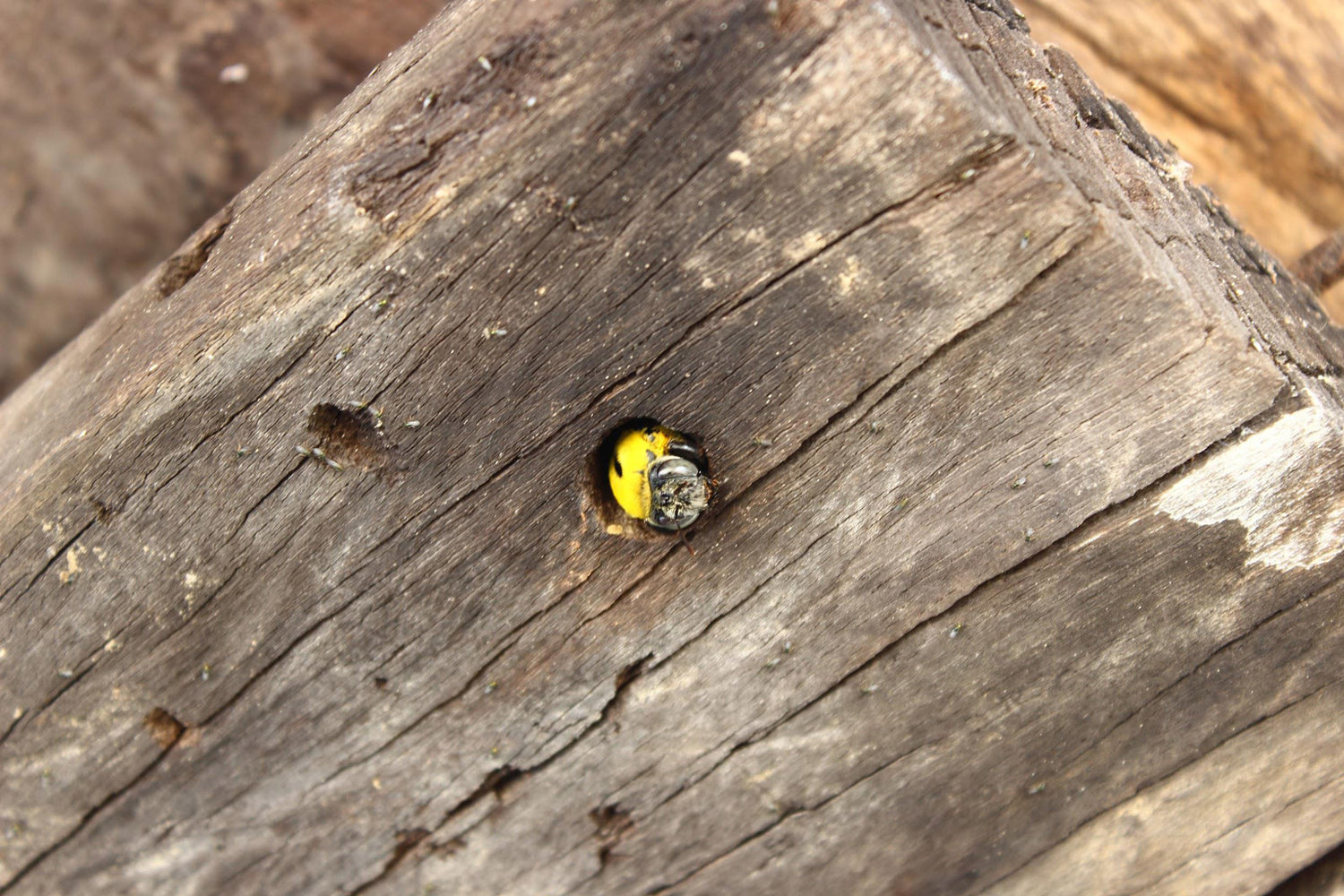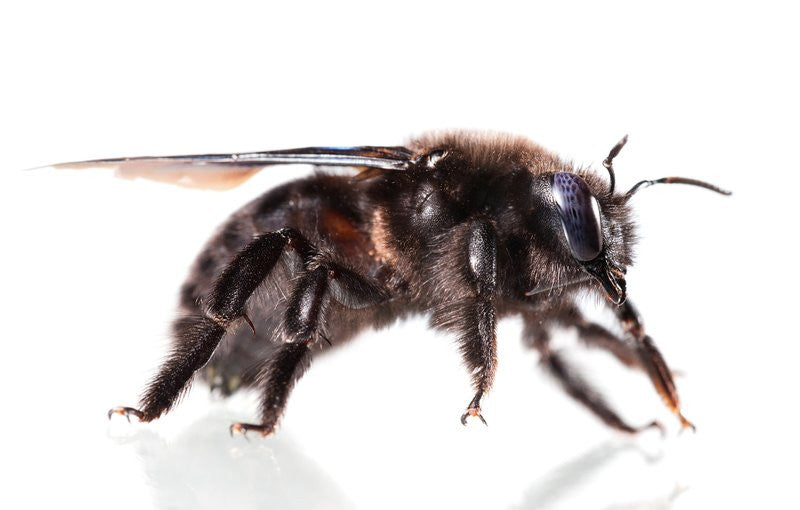
Where Do Carpenter Bees Live in Winter?
For those who are afflicted by carpenter bees, they seem to be a constant annoyance all spring and summer. But where do they go during the cold winter months? You may be surprised to learn that carpenter bees hibernate in their nests during the winter.
Carpenter Bee Winter Hibernation Habits
As spring begins, so does the life cycle of a carpenter bee. Young adult carpenter bees emerge from their hibernation ready to mate, and create a new nest all their own – this is the best time to hang your carpenter bee trap! You will start looking for these wood boring bees when the temperature starts to rise in your area (around 70° degrees). By the end of spring, the carpenter bees are well into their nest construction with the sole purpose of creating a home for their young. At the onset of summer, these eggs are laid and will hatch a short time later, in early fall.
Come winter those new, young carpenter bees that hatched in late summer will return to their nests to hibernate for the winter. The older adult female and male carpenter bees who created the nest will die during the summer after the larvae are laid. And so the cycle continues.
Can You Treat for Carpenter Bees in the Winter?
Although you may think you have time, we highly suggest gearing up in some warmer clothing to carpenter bee-proof your wooden structures before spring even begins. Making sure you can find and plug existing carpenter bee nests before they reawaken will save you time & frustration. This strategy & utilizing carpenter bee traps once spring starts will be your best answer to preventing wood boring bees.
Learn how you can take preventive action to plug up these holes before nesting season even begins! These tips will keep you in the loop for the best prevention methods for deterring carpenter bees from destroying your wooden structures. We can’t control nature, but Best Bee Brothers wants to help keep you up-to-date on the constant battle against carpenter bees and the damage that follows them.









7 comments
Customer Support
@Sarah – Yes, it is true Carpenter Bees do some pollination. You can learn more here: https://bestbeebrothers.com/blogs/blog/solitary-bees-busy-as-can-bee-pollinators The damage carpenter bees can cause to structures can cause hundreds if not thousands of dollars. In that case, you have weigh the risk/benefit. If it is ruining a structure and you’ll probably have to replace sections soon for safety. If you are using carpenter bee traps, we find it helpful to plant flowers that are best for heavy pollinators (i.e. Bumblebees and Honeybees) to offset the loss. https://bestbeebrothers.com/blogs/blog/mason-bee-pollination We hope this helps!
Sarah
Hi! This is a great site for resources, thank you for this! So I just moved into a lovely home with a very large, unstained wooden deck, with a forest line about 10 yards behind. I noticed a pile of sawdust this morning, and could actually hear the wood scratching coming from inside the little hole right above it. Im reading a lot on sites that says not to kill them since they are so crucial to pollination especially with the honeybee in decline, so is it smart to leave the one hole? Especially if they return? I really don’t want to kill them, that is always my last resort.
Donna Curtis
I have had a serious carpenter bee infestation in my patio roof beams since I have lived here(11 years). They got so out of hand my dog was scared to be in the back yard. I tried natural remedies and nothing worked. As of now I have seen no evidence of recurrence this season. However this is what I did last year. Orkin treated the roof 4 times last season. Then in September when there was no sign of them, did the following: power washed all wood, filled every hole and tunnel ( as much as I could stuff in tunnel) with rubbing alcohol soaked cotton balls, then steel wool, then a wooden plug with wood glue on the tip of it, then wood filler to cover wood plug, then stained all wood. I am aware this may sound like overkill but the damage was so extensive that one beam had to be replaced because the tunnels had rotted the wood away. We plugged over 50 holes and tunnels. It was a lot of work and I was grateful I had help doing it. So far so good this season. It had gotten so bad I felt I had to do everything possible to keep them away. Carpenter bees can do alot if damage if left alone.
Customer Support
@Jean – Where are you located? If you take a look at our page regarding carpenter bee seasonality (https://bestbeebrothers.com/pages/carpenter-bee-seasonality) carpenter bee activity can start at the end of February. Depending on the weather/temperature, they may start moving earlier. If you are finding them in your homes, you may have a nest close to the inside of your walls in your home as it is warmer. We hope this helps! ~Customer Support
Jean Branson
We have had carpenter bees appearing in the house in January and February. We can’t figure out how or why they are here. Any ideas?
Leave a comment
All comments are moderated before being published.
This site is protected by hCaptcha and the hCaptcha Privacy Policy and Terms of Service apply.